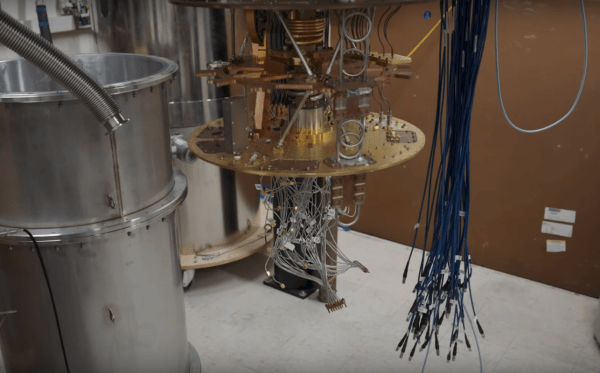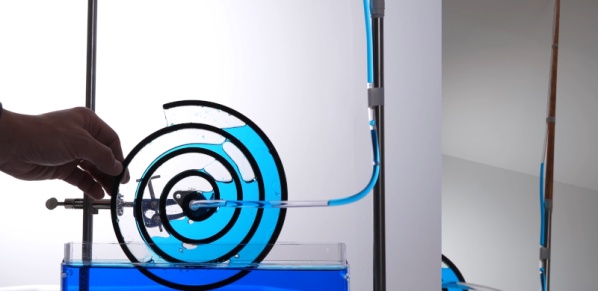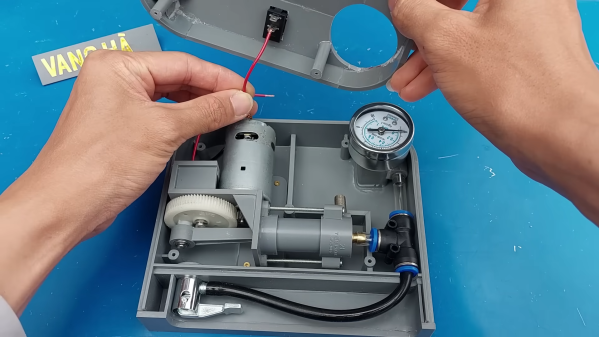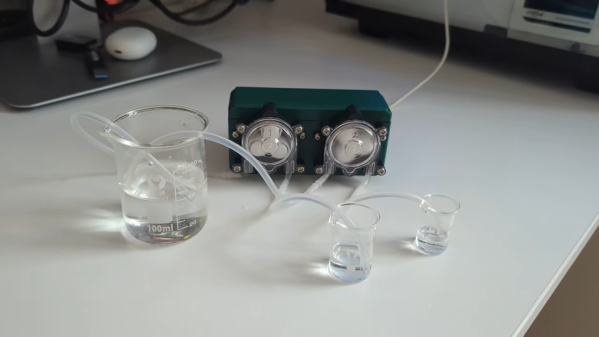Electrohydrodynamics (EHD) involves the dynamics of electrically charged fluids, which effectively means making fluids move using nothing but electric fields, making it an attractive idea for creating a pump out of. This is the topic of a 2023 paper by [Michael Smith] and colleagues in Science, titled “Fiber pumps for wearable fluidic systems”. The ‘fiber pumps’ as they call the EHD pumps in this study are manufactured by twisting two helical, 80 µm thick copper electrodes around a central mandrel, along with TPU (thermoplastic polyurethane) before applying heat. This creates a tube where the two continuous electrodes are in contact with any fluids inside the tube.
For the fluid a dielectric fluid is required to create the ions, which was 3M Novec 7100, a methoxy-fluorocarbon. Because of the used voltage of 8 kV, a high electrical breakdown of the fluid is required. After ionization the required current is relatively low, with power usage reported as 0.9 W/m, with one meter of this pump generating a pressure of up to 100 kilopascals and a flowrate of 55 mL/minute. One major limitation is still that after 6 days of continuous pumping, the copper electrodes are rendered inert due to deposits, requiring the entire system to be rinsed. Among the applications the researchers see artificial muscles and flexible tubing in clothing to cool, heat and provide sensory feedback in VR applications.
While the lack of moving parts as with traditional pumps is nice, the limitations are still pretty severe. What is however interesting about this manufacturing method is that it is available to just about any hobbyist who happens to have some copper wiring, TPU filament and something that could serve as a mandrel lying around.
Thanks to [Aaron Eiche] for the tip.


















